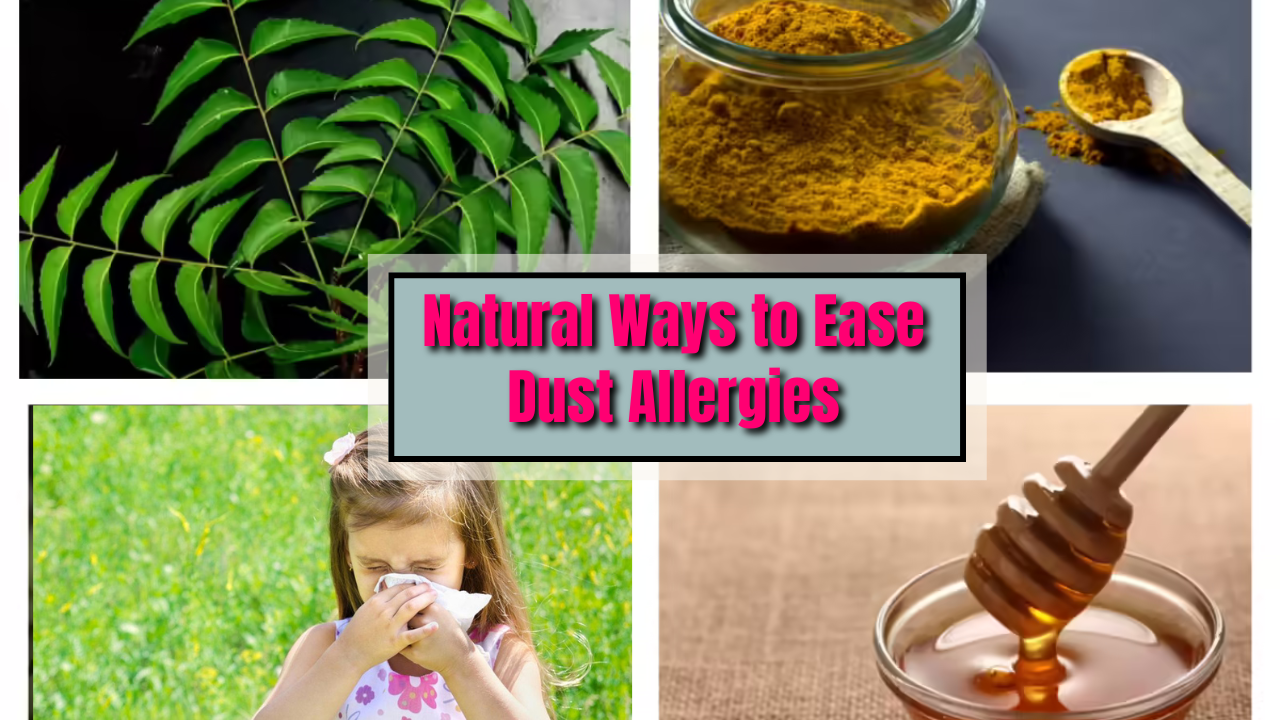Today, children are getting afflicted by almost every conceivable form of allergy, while parents seek alternative or natural ways of treating symptoms without going for heavy medications. Whether seasonal allergies, food intolerances, or allergens in the environment, natural treatments can offer gentle yet effective relief. This blog will discuss various holistic methods of treating children with allergies while considering safety, ease of use, and long-term wellness.
What Are Childhood Allergies?
Before looking at treatments, we must gather what allergies are and what they do to children. The immune system reacts to something it considers an allergen. Common allergens to children are pollen, pet dander, dust mites, molds, and foods like nuts, dairy, or wheat.
Allergic reactions range in severity, from mild manifestations such as a runny nose or itchy skin to extreme ones that include hives, swelling, and labored breathing, known as anaphylaxis. Allergies can worsen other diseases, such as asthma and eczema, too. Therefore, in order to provide comfort to your child and to maintain their good health, commencing an early management plan for allergies is important.
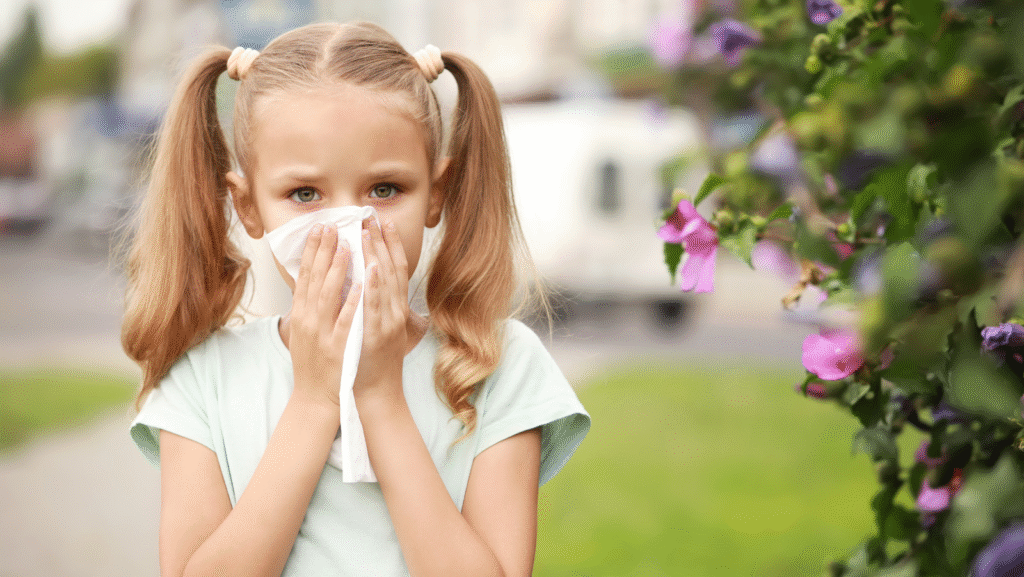
Why Consider Natural Remedies?
Even though chemical antihistamines dispel their effects fairly well, they all have some side effects: drowsiness, dry mouth, irritability, etc. Therefore, natural treatment courses have become popular among parents looking for something less invasive and more holistic. Such remedies support immune function and relieve allergic symptoms without the more obstinate side effects that classical medicines confer.
Natural remedies have a light touch on the human constitution and promote nontoxic health in the long run, working more on disease causation rather than on symptoms. Always consult a healthcare provider if your child has serious allergies before starting any new treatments.
The Symptomatology of Allergies in Children
Depending on allergies, allergy symptoms may present themselves differently in children. Most seasonal allergies start getting symptoms between the ages of 2 and 5 years. Children under 2 years usually do not have seasonal allergies since the sensitization would have happened after two years of exposure.
Some of the symptoms of allergic rhinitis from seasonal allergies:
- Runny nose
- Red, itchy eyes
- Itching
- Sneezing
- Postnasal drip
- Stuffy nose
- Coughing
- Wheezing
- Mouth-breathing
- Trouble sleeping
- No fever
Food allergies have a different symptom picture; some become severe enough to be life-threatening. Cow milk allergy, for instance, appears mostly in children younger than 2 years, and other food allergies can also start within the first year of life. Included below are examples of symptoms seen in some children with food allergy:
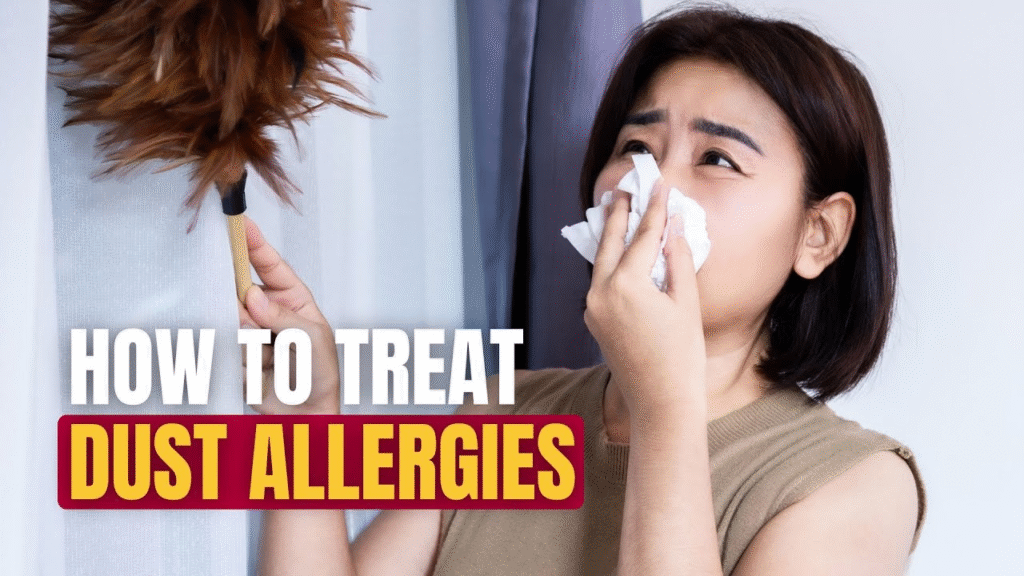
- Hives
- Swelling
- Itchy rash
- Wheezing
- Difficulty breathing
- Nausea and vomiting
- Diarrhea
- Pale skin
- Dizziness
- Fainting
- Acute irritability or crying
Severe allergies that cause serious symptoms must be treated by a healthcare provider.
The most common allergens in toddlers and small children may be classified as follows:
- Pollen: Tree, plant, weed, and grass pollen are airborne and unavoidable. Some specific pollen allergies (trees, grass, ragweed) are focused in the spring and fall; however, the season of these foreign bodies can last in some places year-round.
- Dust: Dust consists of common allergens and dust mites. Dust allergies can occur all year round.
- Animals: Allergy symptoms may begin in children from pet dander and saliva. After exposure, symptoms may not develop for hours but often begin within 20-30 minutes of contact with their pet. Other insects and pests, such as roaches and mice, may also create allergy problems.
- Irritants: Environmental irritants, including latex, chemicals, or drugs, can cause allergies in both children and adults.
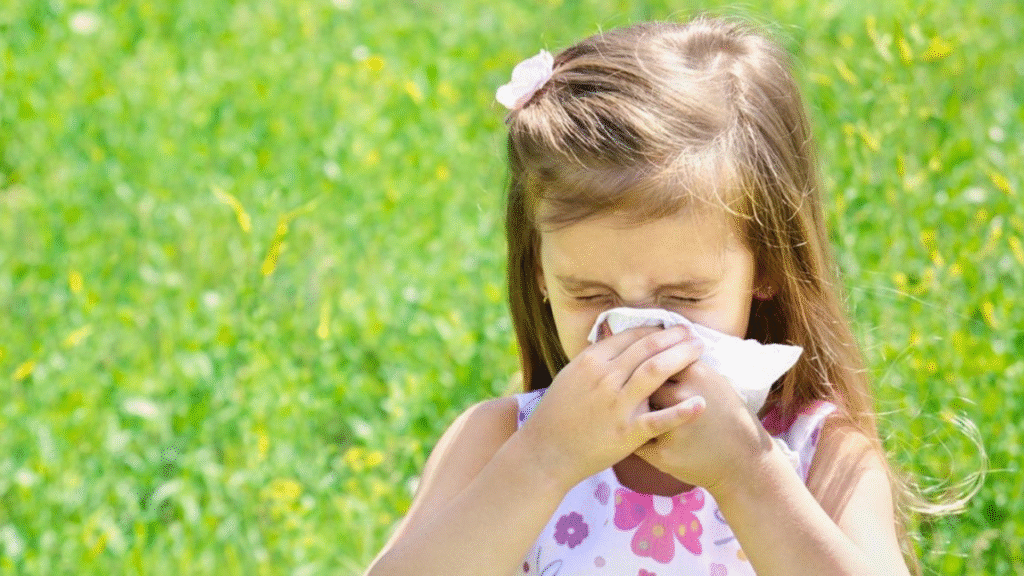
Some of the different common allergenic foods that mostly cause allergies in children include:
- Peanuts
- Milk
- Eggs
- Fish, shellfish
- Soy
- Tree nuts
- Wheat
The uncontrolled seasonal allergic condition creates a perfect environment for chronic ear infections in young children. The inflammation from allergic rhinitis gets to the ears. The ear can then become infected and develop into an ear infection if there is fluid buildup in the inner ear.
A Natural Approach to Treat Allergies
A child with mild allergy symptoms can try the home remedies for relief.
Aloe Vera Gel
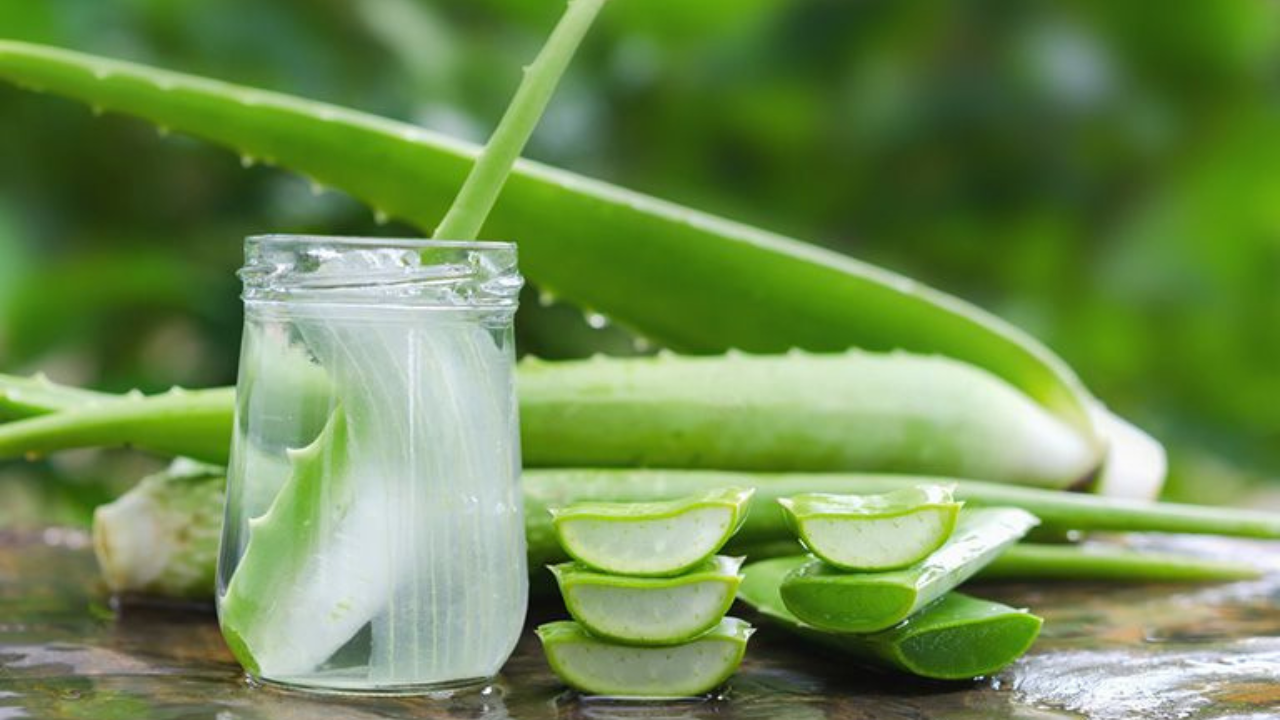
With skin allergy symptoms like itching and redness in toddlers and children, aloe vera gel can be useful. Aloe vera is scientifically proven to work in healing skin injuries like cuts, burns, and insect bites.7 Your health provider should be able to recommend some aloe vera gels that are suitable for children.
Eye Drops
Eye drops are good treatment options for children experiencing symptoms of eye allergies: redness, itching, swelling, and so on. If your toddler or child is open to using eye drops, ask your child to lie flat on their back. With one hand, pull down on one eyelid and drop one drop into the lower eyelid with the other hand. Then have your child stay like that for two minutes with their eyes closed.
If your toddler or child refuses to cooperate with the drops, you can still try to use them. Have your child lie down with closed eyes. Place a drop in the inner corner of their closed eye. The drop will go into their eye when they eventually open and blink. Ask your healthcare provider or pediatrician for the safest options for toddlers or young children.
Cold Compress
Cold or hot compresses are a good and easy remedy that can be used by almost all children. It helps children suffering from allergic rhinitis and eye allergy symptoms, such as red, itchy eyes. First, wash the child’s face to wash away allergens that may be present on the skin.
To make the cold compress, fill a small bowl with ice water. Soak a clean washcloth in the water, wring out the excess water, and let the child rest with the compress for 10 minutes.
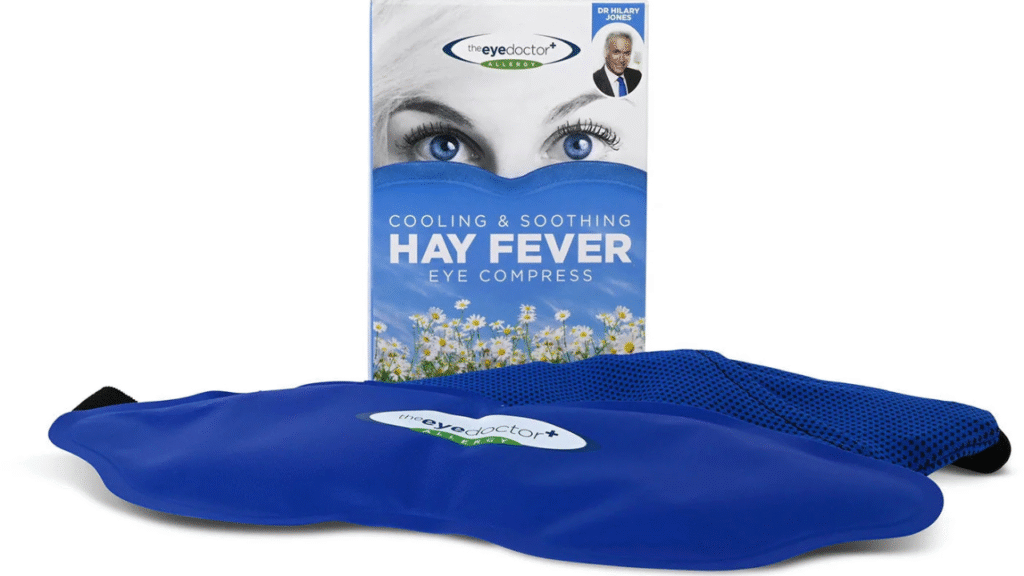
Saline Solution
If your child is open to trying it, rinsing their sinuses with saline can bring great relief to allergic rhinitis complaints.9 Saline nasal irrigation was shown to improve nasal symptoms in those studied and reduce the need for allergy medications.
Diet Changes
Dietary changes are necessary for children with food allergies. While diagnosing a class IgE-mediated food allergy (when your child’s immune system creates a reaction with one or several foods), your healthcare provider might suggest an elimination diet.
The elimination diet is usually recommended when a food allergy is confirmed either by blood test, skin test, or oral food challenge. You or your child will eliminate the allergenic food from your diet. Your child may be able to add a food back into their diet after they have grown out of their food allergies or become negative on blood tests.
Fortunately, many food allergies are transient. About 80% to 90% of children with egg, milk, wheat, and soy allergies are estimated to outgrow them by the age of 5.4
Probiotics may be able to help with allergic rhinitis symptoms. Research observes that with daily probiotic supplementation, there is an improvement in symptoms and quality of life of allergy patients.
One of the first types of treatment to consider for allergies in toddlers is the avoidance of allergens. If your child is allergic to certain foods, those food groups should not be consumed. In the case of pollen allergies, a child should avoid being outdoors during the pollen season, and the parents should shut the windows of the house, preventing the pollen from entering. Make sure to wipe down the fur of pets who have gone outdoors, as their fur can trap pollen.
When to See a Healthcare Provider

If your child still seems uncomfortable with any home remedy you have tried, a health care provider should be consulted. Serious allergic reactions characterized by severe symptoms, such as difficulty in breathing, require medical attention. If your child is having such serious allergy symptoms to the extent of missing school or daycare, the guidance of the healthcare provider will be of great value. They may start by discussing the treatment options – allergy testing, medications, and immunotherapy (allergy shots).
Conclusion:
Allergy disorders have become a common menace in toddlers and young children. Symptoms include runny nose; itchy eyes; skin rashes, hives, vomiting and diarrhea; and trouble in breathing. Common allergens in children include pollen, dust, animal dander, irritants, and foods. In mild allergy symptoms in children, some home remedies can be helpful.
FAQs:
What are common symptoms of dust allergy in children?
Children may experience sneezing, a runny nose, itchy eyes, coughing, and nasal congestion when exposed to dust allergens.
Can dust allergy in kids be treated naturally at home?
Yes, natural remedies like steam inhalation, saline nasal sprays, and regular cleaning can effectively reduce dust allergy symptoms in children.
How can I prevent dust allergy in my child’s room?
Keep the room dust-free, use washable bedding, avoid stuffed toys, and clean surfaces regularly to minimize allergens.
Is steam inhalation safe for kids with dust allergy?
Yes, gentle steam inhalation helps clear nasal passages and ease congestion, but always supervise and ensure safe water temperature.
Can diet help in reducing dust allergy symptoms in children?
Yes, foods rich in vitamin C, antioxidants, and omega-3s can boost immunity and help reduce allergy-related inflammation naturally.
Hi, I’m veda, a professional health content writer and passionate wellness advocate at HealthTipsIndia.com
. With years of experience in writing evidence-based, reader-friendly articles, I specialize in creating content that empowers people to live healthier, more balanced lives. Whether it’s nutrition, fitness, natural remedies, or preventive healthcare, I translate complex medical concepts into actionable tips tailored for the Indian lifestyle. My goal? To make trustworthy health information accessible to everyone—one article at a time.

